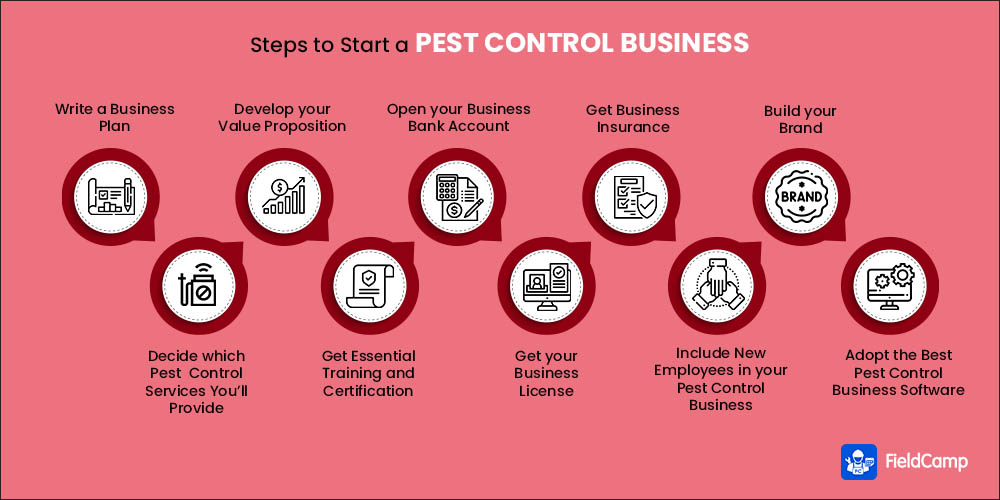The Of Pestwise
Pestwise for Beginners
Table of ContentsA Biased View of PestwiseRumored Buzz on PestwisePestwise Things To Know Before You Get ThisPestwise Can Be Fun For EveryonePestwise Things To Know Before You Get ThisAll About PestwiseThe Basic Principles Of Pestwise

Q. Specify "incorporated insect monitoring" (IPM) and listing a number of possible control methods that may be made use of in an IPM approach. A. Integrated bug management is the integrating of suitable pest control strategies right into a single plan to reduce parasites and their damages to an acceptable level. Insect control strategies might consist of: host resistance, biological control, cultural control, mechanical control, cleanliness, and chemical (pesticide) control.
More About Pestwise
What can you do to maintain the parasites you are trying to manage from becoming immune to the pesticides you use? A. Pest resistance can be minimized by using incorporated pest administration and rotating the kinds of chemicals used.
Parasites are a critical risk to the farming business, and integrated insect monitoring aids growers address and minimize these dangers. Integrated bug administration utilizes a number of methods in facility, thus being a more effective option to the concern. Wasp Nest Removal. Particularly, removing aggressive chemical methods enables reducing harm to individuals and the atmosphere by utilizing all-natural and more secure options instead
The Pestwise Statements
The goal of incorporated pest monitoring is to reduce this harm and control appropriate infestation degrees rather than get rid of all undesired populations. This is why it is very important to comprehend what measures are warranted in each situation and use aggressive ones only when other incorporated administration strategies don't work. Integrated administration minimizes the unfavorable effects of a non-IPM technique, and the main benefits of IPM Conveniences of IPM.
An appropriate understanding of the invasion scope identifies if the issue must be resolved. are the next elements of an IPM program due to the fact that it is very important to recognize if the microorganisms make possible threats and pick the incorporated monitoring alternatives or the particular pesticide usage. mean to reduce infestations by applying various agronomic strategies.
Pestwise Can Be Fun For Anyone
if avoidance was inefficient. Integrated administration options in an IPM program begin with much safer to a lot more aggressive ones. Target or program chemical spraying might follow hands-on elimination or trapping that hasn't aided. The prior integrated monitoring facets assist comprehend exactly how to intend and implement an IPM program step by action: Display your crops frequently.

Among others, IPM social approaches consist of the complying with field administration techniques: soil treatment; option of appropriate plants; plant rotation; interplanting or strip cropping; selection of growing dates; weed control; usage of trap plants. Positive soil conditions speed up plant development, and strenuous plants are extra immune to infestations. Healthy and balanced seedlings and seeds determine effective crop development, so it is essential to select pest-free planting material with solid origins.
Therefore, amongst various other applications, plant rotation can be properly utilized as an integrated parasite management technique. Pests spread out slower if rows of various plant kinds separate their host plants in intercropping or strip cropping, which is additionally made use of in the incorporated this content pest management system. Conversely, invasions boost when plants of the exact same plant kind or family members grow together.
Potato beetles can hurt growing potatoes, in addition to tomatoes. Planting catch plants in patches is another alternative for IPM intercropping. This incorporated insect management technique recommends drawing in parasites to certain plants and afterwards controlling them with chemical or mechanical methods. Specifically, you can expand soybeans as catch plants for Japanese beetles.
8 Easy Facts About Pestwise Explained
Obstacles are common examples of physical IPM methods. Let's take a closer look at them. Removing or picking bugs out manually is a time and labor-consuming option that is commonly applied in incorporated management and chemical-free farming. Fully grown pests or their eggs and larvae are accumulated by hand and ruined.

Division of Plant Sciences. This integrated management method implies an usual means of destroying bugs by predators, parasitoids, virus, and various other biological control representatives (also known as antagonistic organisms). The duty of biological control in IPM is to.
5 Simple Techniques For Pestwise
With time, their population became a genuine problem to farmers together with aboriginal kangaroos or dingoes. The walking stick toad is another situation illustrating incorporated biological control failing in this respect when it declined to quest the target varieties and became a pest itself. Parasitoids develop on or within their hosts to eventually kill them after growing.